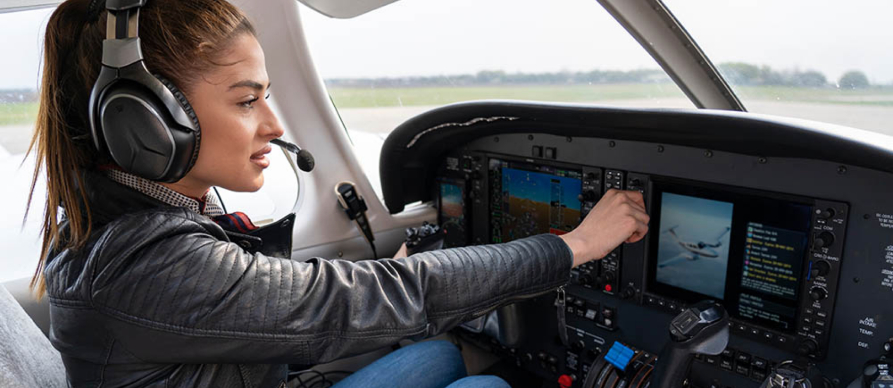
The term “solo flight” is defined as flight time during which a (student) pilot is the sole occupant of an aircraft. In order to fly solo, a student pilot must meet the training and experience requirements of the Federal Aviation Regulations (FAR’s) 61.87 Solo requirements for student pilots before being eligible for solo flight.
61.87 Solo requirements for student pilots
“A student pilot may not operate an aircraft in solo flight unless that student has met the requirements of section 61.87″
In addition to meeting the FARs, East Coast Aero Club have set other specific requirements that are to ensure you are ready to solo in and around a busy Class D airport and airspace. These requirements must be met and verified in a stage check before you are eligible to fly solo
Aeronautical knowledge. You must complete an aeronautical knowledge test that covers
- Applicable sections of parts 61 and 91 of the Federal Aviation Regulations
- Airspace rules and procedures for the airport where the solo flight will be performed.
- Flight characteristics and operational limitations for the make and model of aircraft to be flown.
- At the conclusion of the test, all incorrect answers will be reviewed before solo flight will be authorized.
Pre-solo flight training. Prior to conducting a solo flight, you must have:
- Demonstrated satisfactory proficiency and safety, as judged by an authorized instructor, on the maneuvers and procedures required by this section in the make and model of aircraft or similar make and model of aircraft to be flown.
- Received and logged flight training for the maneuvers and procedures (listed below) that are appropriate to the make and model of aircraft to be flown.
- Proper flight preparation procedures, including preflight planning and preparation, powerplant operation, and aircraft systems.
- Taxiing or surface operations, including run-ups.
- Takeoffs and landings, including normal and crosswind.
- Straight and level flight, and turns in both directions.
- Climbs and climbing turns.
- Airport traffic patterns, including entry and departure procedures.
- Collision avoidance, wind shear avoidance, and wake turbulence avoidance.
- Descents, with and without turns, using high and low drag configurations.
- Flight at various airspeeds from cruise to slow flight.
- Stall entries from various flight attitudes and power combinations with recovery initiated at the first indication of a stall, and recovery from a full stall
- Emergency procedures and equipment malfunctions.
- Ground reference maneuvers (S-Turns, Turns Around a Point, Rectangular Course)
- Approaches to a landing area with simulated engine malfunctions.
- Slips to a landing.
- Go-Arounds
ECAC specific solo requirements for student pilots
Hanscom airport is a busy airport with a mixture of general aviation, commercial and military traffic. The class D airspace lies below the airspace of the class B (Boston) airspace. There is a high level complexity involved in flying in and around
Hanscom airport. Students who are flying at Hanscom needs to be ready to fly in this environment. You will be tested on and must be proficient in the following areas:
General Requirements
- Massport Security Requirements
East Coast Aero Club Emergency Procedures
- ECAC Emergency Procedure Quiz
- Review of emergency procedures
Aircraft Knowledge, Inspections and Care
- Airplane powerplant knowledge
- Electrical System and issues
- Pre-flight Inspection
- Care of East Coast Aero Club Aircraft. (interior and exterior)
- Use of Cockpit Covers
- Securing Aircraft
- Aerodynamics
Ground Operations
- Flight Planning
- Pre-flight inspection
- Break Check
- Taxiing around Hanscom (with knowledge of hot spot(s) )
- Airport Signage & Markings
- Runway Incursion avoidance
- Parking Procedures
- Maintenance Issues
- Fuel Requests
Flight Operations
- Navigation to practice area using visual cues and heading.
- Airport Traffic Pattern
- Collision Avoidance
- Landings – in addition to FAR’s
- Radio Calls and Procedures
- Navigation techniques
- Use of Checklists
- Spin Awareness Training (Simulator)
Pre-Solo Stage Check
East Coast Aero Club have the policy for student pilots to complete a Pre-Solo Stage Check with another instructor prior to any student being endorsed for solo flight. The stage check comprises of an oral portion and a flight portion and follows a checklist of items that must be covered during the stage check. Upon satisfactory completion of the stage check the student will be endorsed to fly solo under stipulated conditions at the discretion of their flight instructor